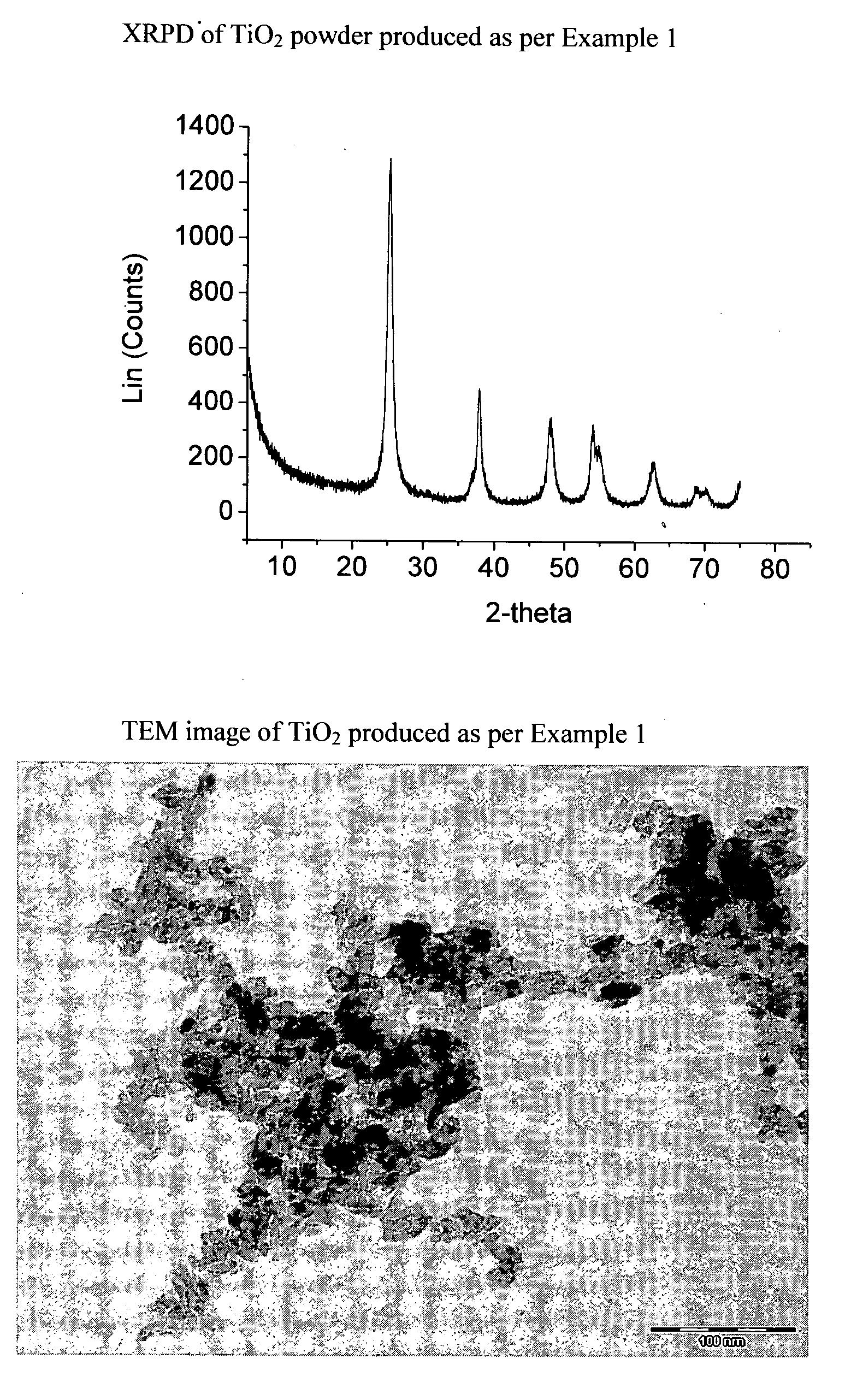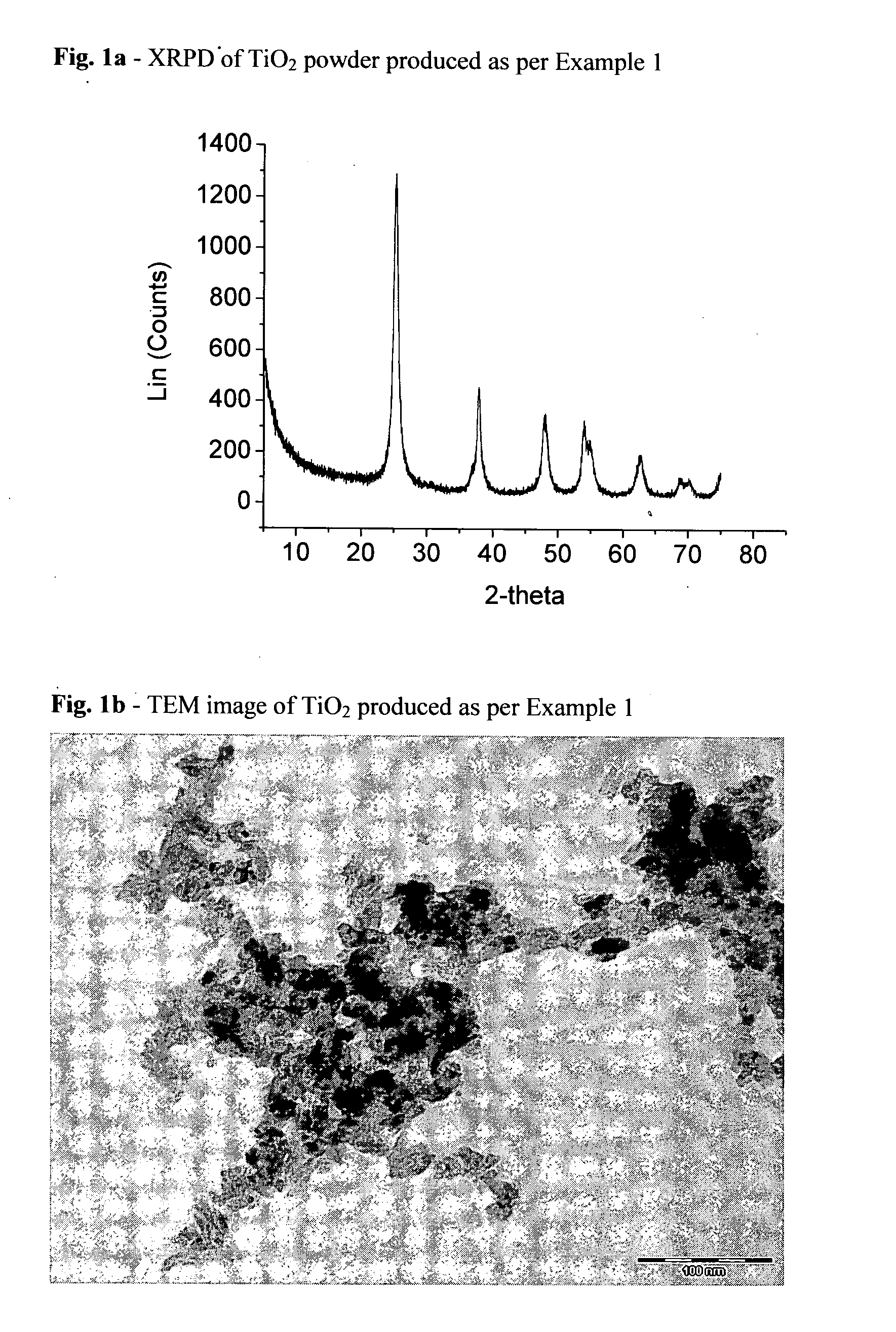Process for the preparation of titanium dioxide with nanometric dimensions and controlled shape
a nanometric and controlled shape technology, applied in the field of titanium dioxide preparation with nanometric dimensions and controlled shape, can solve the problems of unsuitable anatase formation methods, laborious process to reach the desired, and high cost of synthesis methods, and achieves easy industrial scale, high reproducibility, and economic methods.
- Summary
- Abstract
- Description
- Claims
- Application Information
AI Technical Summary
Benefits of technology
Problems solved by technology
Method used
Image
Examples
example 1
[0084]Benzyl alcohol (403 g; 3.88 moles), acetic acid (90 g; 1.51 moles) and titanium tetraisopropoxide (106.7 g; 0.375 moles) are mixed together by mechanical stirring, at room temperature, in a 1000 ml flask equipped with a bubble condenser. The mixture is heated to the reflux temperature of around 110° C. After 5 hours, the solution becomes cloudy and tends to thicken gradually. The stirring speed is increased and the mixture left at reflux for around 24 hours. The suspension becomes fluid and displays an intense white colour. The mixture is transferred to a flask and vacuum-concentrated (0.5 mmHg) at a temperature of around 70° C. until a viscous paste is produced. The residue obtained with ethanol, and subsequently with diisopropyl ether, is then filtered and dried at low pressure, yielding TiO2 (26.5 g), characterized by XRPD (FIG. 1a) and TEM (FIG. 1b).
example 2
[0085]Following the same procedure of Example 1, but using benzoic acid (184 g, 1.51 moles) rather than acetic acid, TiO2 is produced, characterized by XRPD (FIG. 2a) and TEM (FIG. 2b).
example 3
[0086]Following the same procedure of Example 1, but using oleic acid (76.26 g, 0.27 moles) rather than acetic acid, TiO2 is produced, characterized by XRPD (FIG. 3a) and TEM (FIG. 3b).
PUM
| Property | Measurement | Unit |
|---|---|---|
| length | aaaaa | aaaaa |
| length | aaaaa | aaaaa |
| width | aaaaa | aaaaa |
Abstract
Description
Claims
Application Information
 Login to View More
Login to View More - R&D
- Intellectual Property
- Life Sciences
- Materials
- Tech Scout
- Unparalleled Data Quality
- Higher Quality Content
- 60% Fewer Hallucinations
Browse by: Latest US Patents, China's latest patents, Technical Efficacy Thesaurus, Application Domain, Technology Topic, Popular Technical Reports.
© 2025 PatSnap. All rights reserved.Legal|Privacy policy|Modern Slavery Act Transparency Statement|Sitemap|About US| Contact US: help@patsnap.com



